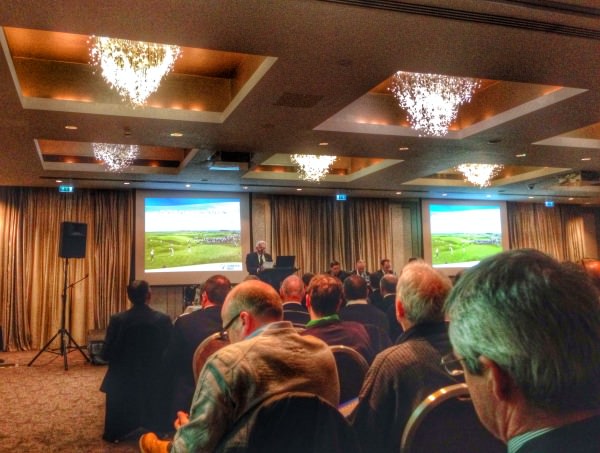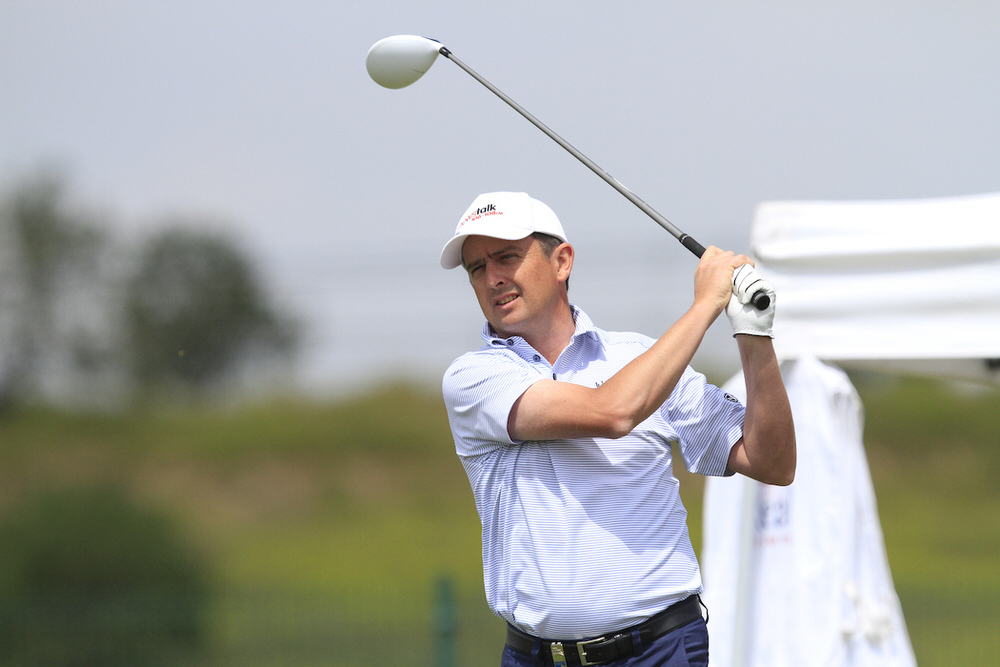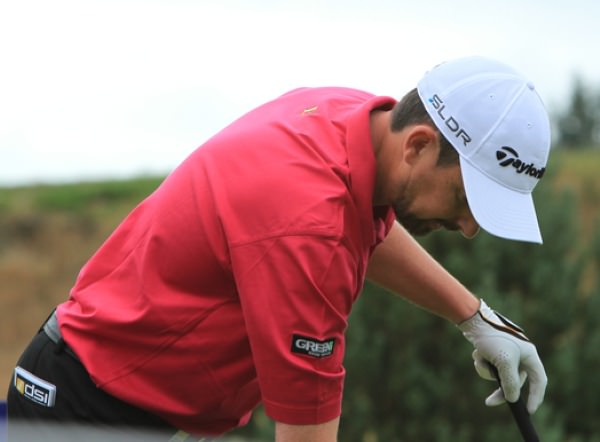Lawrie urges confrontation on slow play scourge

There was a big turn out from delegates to hear about Leinster Golf 's "Roadmap 2017" and ways to tackle slow play
Leinster Golf's Roadmap 2017 — an action plan designed to revive the game in Leinster clubs by increasing participation and addressing its weaknesses to name just two target areas — met with a positive reaction from delegates at Monday night's seminar at Carton House. But when the subject turned to the scourge of slow play which is proving to be a turn-off for many who might otherwise remain in the game, tour player Peter Lawrie urged one course of action: Confront the slow coaches.
But having listened to industry experts explain how they have helped clubs drastically reduce those marathon rounds to 3 hours and 26 minutes for a three ball (and 3 hours 46 for a fourball) through education campaigns, intelligent course set up and other methods (including implementation of the GREENi pace of play system), tour star Lawrie insisted that there can be no pussyfooting around the issue.
"People have spoken here about not confronting the slow players but to be honest, I am of the view that if you are slow, you need to be told," Lawrie said last night. "You need to be told to speed up or get off the golf course.
"The Tour have taken it to a point where they can't really catch a guy,who is exceptionally slow, they put him last out on the draw sheet so he doesn't really affect the pace of play. That's something that we really need to look at.
Peter Lawrie and Michael Hoey shake hands after a round in the Scottish Open last year. Picture Stuart Adams www.golffile.ie
"Coming as a junior from Newlands, there was a great junior programme and we were brought on after an initial fight and I would certainly applaud Leinster Golf for what they are doing for Juniors now. But as I was asked to come here to talk about slow play on the tour, and while we have done our best to stamp it out, it is very difficult. The confrontational way is the best way forward, to be honest.
"We need to stamp out slow play and if the players need to know about it, so be it."
Fans who are regularly frustrated by the painfully slow pre-shot routines of the tour stars on are TV screens are finding themselves facing the same menace in their Sunday club competitions. And while some delegates insisted that it was finance or unfair competition from NAMA clubs rather than slow play that was to blame for their haemorrhaging of members over the last five years, there is no doubt that others stay away from the game because they cannot afford to give up most of a day to play the game.
Lawrie confessed that the bad habits of the tour stars were partly to blame for the snails who make life a misery for club golfers who want to whizz round the course at a reasonable pace and still have time to enjoy some social life in the clubhouse (giving the club some much needed income).
"Slow play has a lot to do with my own profession," said Lawrie, who is a member of the European Tour Players Committee. "Slow play on tour has damaged the game dramatically, I feel. Guys on tour are taking five and a half hours to play golf and there are young kids watching them and they are lining up their putts from every angle and taking their time over iron shots and tee shots and discussing with their caddie and doing this that and the other. It is detrimental to the game.
"The Tour has tried to do something about it. But as Enda Kenny would say, they have done a lot but they have a lot more to do. In general, the tournament director sets up a golf course each week, they walk the course, time each hole and give you an allotted time and put it up on the notice board how long you have for 18 holes and how long each hole should take.
"We have referees going around and you see one every three holes, but it still doesn't solve the pace of play issue. It still takes us, in the three ball, four and a half fours, maybe five hours to play, which is pretty much ridiculous.
"We are pushed on by TV - they are the main push. If we don't get finished by our allotted time the tour gets fined for being after their time. TV wants to finish at five o'clock, TV has to finish at five o'clock. So they are they main pushers and really it comes down to money. That's the one thing we have succeeded with in speeding up play on tour, and that's fining people.
"If you are timed 10 times in a season, your first bad time is a €2,000 fine. And every bad time after that doubles. So the slow players out on tour really have to start making money if they want to start paying their fines. You could get a guy who will run up a €20,000 fine bill over a year, which doesn't help you.
"From my point of view as quite fast player, there is nothing as frustrating as playing with a slow player. I've been out on tour for the last 10 years and the Challenge Tour before that. I've noticed that if a referee comes upon our group, the inexperienced guy who is quite a quick player will try to speed up and it makes way for the slow player. When the referee comes and you are a fast player, who want to slow down to better point out the slow player in your group."
Asked to name and shame the slow players and highlight the professionals who get on with the game, Lawrie joked: "No comment."
But he didn't need much encouragement.
"You could name the fast players. Danny Willett is exceptionally fast. Stephen Gallacher is very fast. Rory McIlroy is very quick. Slow players, there are plenty of them and unfortunately it is maybe the Swedes, Niclas "not so" Fasth, and a couple of the French guys as well who would be exceptionally slow. In general you would have to say that the Scandinavians are probably the worst in general and the Irish and English are probably the quickest."
Professional secretary managers such as Castle's John McCormack and Blainroe's Patrick Bradshaw, gave excellent presentations on how they have managed to drastically improve pace of play at their clubs without the need to use the big stick - sensible intervals between groups, proper course set up in terms of pin positions, rough, green speeds; high visibility of reminders; proper pace of play guidelines.
But Lawrie still insisted that club members and administrators should not be afraid to speak up and tell the slow coaches that they are ruining the game for the rest and re-iterated the need for proper set up for courses in an age when many clubs feature USGA-spec greens and plentiful sand, which allows them to present a test that may be far too difficult for the standard of player being asked to get around in less than four hours.
"As for course set up being important, I would say that it has to be done on the day," Lawrie said, bringing back memories of recent national and provincial championships that were marred by course set ups that were clearly prepared with far more benign weather conditions in mind.
"Wind conditions can vary. There is no point in doing it the night before. There is no point in doing it two weeks prior. All course set up has to be done on the day. It can change dramatically. You can play a par three one day and it is a seven iron and if the wind changes dramatically it can be a two iron. That causes disaster for the pace of play."
AUDIO PLAYBACK OF SOME OF MONDAY NIGHT'S PRESENTATION OF LEINSTER GOLF'S ROADMAP 2017 AND THE PACE OF PLAY DEBATE.







